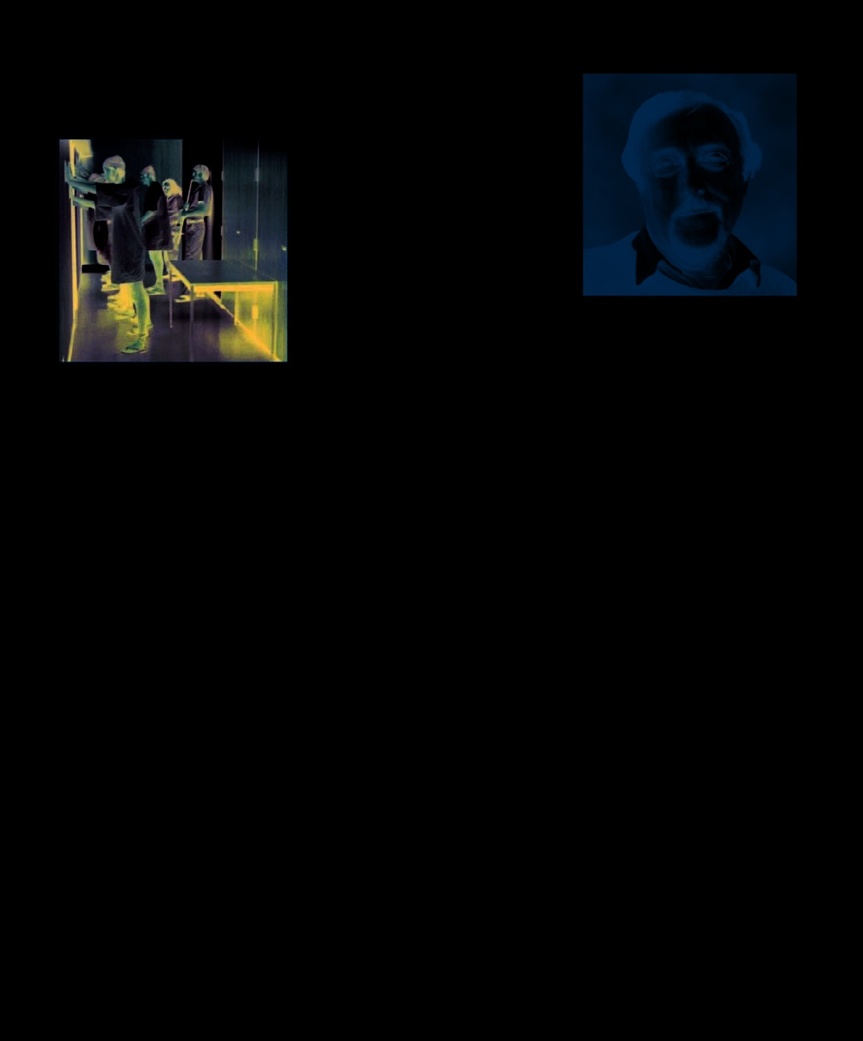The Psychology Book (79 page)
Read The Psychology Book Online
Authors: Unknown

252 STANLEY MILGRAM
teachers) to be obedient and to
carried out by the Nazis. However,
debriefed after the experiment.
follow orders—especially the rules
the conflict between a person’s
Self-knowledge, he argued, is a
set forth by authority figures. As
conscience and external authority
valuable asset, despite the
Milgram says, “obedience is as
exerts a huge internal pressure, and
discomfort that the participants
basic an element in the structure
Milgram felt that this accounted for
may have felt when forced to
of social life as one can point to…
the extreme distress experienced
confront the fact that they behaved
it serves numerous productive
by the participants in his study.
in a previously unthinkable way.
functions.” But equally, the
However, many psychologists
inhumane policies of the death
Ethical concerns
remained uneasy, and the study
camps in World War II “could only
There were many ethical concerns
was ultimately crucial in the
be carried out on a massive scale
associated with Milgram’s study.
development of ethical standards of
if a very large number of persons
When it was first published, the
psychological experimentation. It
obeyed orders.” His experiments
ensuing controversy was so great
helped to define important principles
clearly demonstrated that normally
that the American Psychological
such as the avoidance of intentional
harmless people become capable
Association revoked his membership
deceit of participants, and the need
of committing cruel acts when a
for a full year. However, it was
to protect experimental participants
situation pressures them to do so.
eventually reinstated, and Milgram’s
from emotional suffering.
In describing his results,
1974 book
Obedience to Authority
Milgram also turned to the theory of
received the annual Social
Cross-cultural validity
conformism, which states that when
Psychology Award.
Another criticism of Milgram’s
a person has neither the ability nor
The major concern was that
study was that he used an
expertise to make a decision, he will
the participants in the experiment
unrepresentative sample: American
look to the group to decide how to
were explicitly deceived, both about
men do not necessarily reflect the
behave. Conformity can limit and
the nature of the study and about
general population. Even so, Milgram
distort an individual’s response to
the reality of the electric shocks.
was able to conclude that obedience
a situation, and seems to result in a
Milgram’s defense was that he
was not a particular feature found in
diffusion of responsibility—which
could not have obtained realistic
the minds of 20th-century Germans,
Milgram felt was crucial to
results without employing deception,
but something more universal. A
comprehending the atrocities
and all of the participants were
number of cross-cultural replications
The behavior of Nazis
during
World War II had been attributed to
a prevalence of the “authoritarian
personality” in the population; this was
questioned by Milgram’s experiments.
Obedience to authority is not a
feature of German culture, but
a seemingly universal feature
of human behavior.
Stanley Milgram

SOCIAL PSYCHOLOGY 253
In wartime, a soldier does
not ask whether it is good
or bad to bomb a hamlet.
Stanley Milgram
American soldiers in Vietnam
reported that their behavior became
unacceptable by degrees—as with
the shock generator—until they found
themselves murdering innocents.
of the original experiment have
twice: first with the virtual learner
historical examples of people using
demonstrated remarkably high
communicating only by text, and
their authority to persuade others to
consistency in results within
then with the computer-generated
commit crimes against humanity.
societies, but slight differences
model visible on screen. Those with
Equally importantly, Milgram
between one country and another.
only text contact with the learner
showed that it is “not so much the
For example, in most of North
had little trouble administering the
kind of person a man is, as the kind
America and Europe, results are
shocks; but when the virtual learner
of situation in which he finds
very similar to those found in
was visible, participants acted
himself that determines how he
Milgram’s original experiment, with
exactly as they had in Milgram’s
will act.” Instead of examining
very high percentages of obedience.
original experiment.
personalities to explain crimes, he
Asian studies, however, show even
says, we should examine the
greater levels of obedience (in East
Society demands obedience
context, or situation.
Asian and Muslim countries in
The notion of a society rests on an
Milgram’s seminal study was
particular), while aboriginal African
understanding that individuals are
heavily criticized at the time, not
and Latin American populations,
prepared to relinquish some personal
least because it painted an
as well as the Inuit peoples of
autonomy and look to others of
unappealing and chilling portrait
Canada, show far less obedience.
higher authority and social status
of human nature. It is easier to
to make decisions on a larger scale
believe that there are fundamental
Virtual torture
or from a higher, broader perspective.
differences between the Nazis and
In 2006, the psychologist Mel Slater
Even the most democratic of
the rest of humanity than to accept
set out to see what the effect would
societies requires the rulings of a
that in certain situations, many of
be if participants were made
recognized, legitimate authority to
us are capable of committing
explicitly aware that the situation
take precedence over individual
extraordinary acts of violence.
was not real. His replication used a
self-regulation, in pursuit of the
Milgram held up a light to the dark
computer simulation of the learner
greater collective good. In order
realities concerning power and the
and shock process, so participants
for any society to function, its
consequences of our tendency to
administering the shocks were fully
populace must agree to obey its
obey authority figures, and in so
aware that the learner was computer-
rules. Legitimacy is, of course,
doing, he simultaneously absolved
generated. The experiment was run
the key, and there are countless
and made villains of us all. ■

254
WHAT HAPPENS
WHEN YOU PUT
GOOD PEOPLE
IN AN EVIL PLACE?
PHILIP ZIMBARDO (1933– )
willingly use (or abuse) the power
IN CONTEXT
S
tanley Milgram’s shocking
obedience studies revealed
granted to them? In 1971 he carried
that people will obey
out the now-famous Stanford Prison
APPROACH
authority figures even if this entails
experiment, using 24 middle-class
Conformity
acting against their own moral
American college students who had
BEFORE
convictions. In the aftermath, Philip
undergone tests to establish that
1935
Muzafer Sherif
Zimbardo set out to discover how
they were mentally healthy.
demonstrates how groups
people would behave if they were
On the flip of a coin the students
quickly come to develop a
put into a position of authority with
were randomly assigned the role of
“social norm” in his autokinetic
unimpeded power. Would they
either “guard” or “prisoner,” and one
effect experiments.
1940s
Kurt Lewin shows how
What happens when you put good people
people’s behavior changes
in an evil place?
as their situations are altered.
1963
Stanley Milgram conducts
his obedience studies, which
demonstrate that people will
Normal, healthy people start to behave
obey authority even if it means
according to the
social roles
assigned to them.
committing cruel acts.
AFTER
2002
British psychologists
Steven Reicher and Alex
Those in the
position of
Those in a
subordinate
Haslam extend Zimbardo’s
power
will naturally use
position
will submit to
study to explore positive rather
(and abuse) their authority.
authority.
than negative group behavior.
2004
Zimbardo defends a
former Abu Ghraib prison
guard in court, arguing that
the circumstances caused
It is the
power of social situations
, rather than the
the guard’s cruel behavior.
dispositions of people, that leads to
evil behavior
.

SOCIAL PSYCHOLOGY 255
See also:
John B. Watson 66–71 ■ Zing-Yang Kuo 75 ■ Kurt Lewin 218–23 ■
Elliot Aronson 244–45 ■ Stanley Milgram 246–53 ■ Muzafer Sherif 337
To the researchers’ amazement,
the environment quickly became so
threatening to participants that the
study had to be ended after only six
days. Every guard became abusive
and authoritarian; prisoners were
denied food or bedding, hooded,
chained, and made to clean toilet
bowls with their hands. As the
boredom increased, they used the
prisoners as their playthings,
Philip Zimbardo
making them take part in degrading